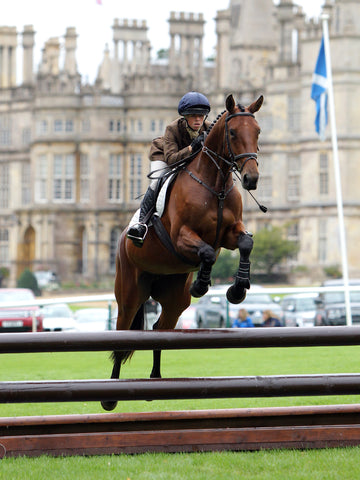The Rio Olympic Games illustrates care for the equine athlete at the highest standard as the Deodoro site is currently being manned by a 130-strong team of veterinary surgeons, anaesthetists, imaging specialists and physiotherapists from Brazil and around the world. While the Games are taking place in Brazil’s winter season, there can be weather fluctuations, so keeping horses cool in Rio is a major focus. Whether your horse is competing at local shows and events, or is in the upper echelons of equestrian sport knowing how to cool your horse down safely and manage the risk of dehydration is absolutely essential. Scientific Nutritional Products take a look.
Can you believe that every day, over 46,000 litres of water and 400kg of ice to chill the water is being used across the Olympic Equestrian Centre just for washing down horses after training and competition? Horses cope with heat very differently to human athletes because of their size but, just like humans, getting their core temperature down after exercise is key.
The horse's normal rectal temperature at rest is around 37-38°C(98.6-100.4°F) but when muscles work during exercise, the muscles produce heat. Though a normal process in itself, if the horse overheats through exercise it can be highly detrimental to their health. High body temperatures (above 41°C) result in high sweat rates and large sweat losses means a loss of both water and electrolytes. This can lead to dehydration, a reduction in performance, or more serious consequences such as heat exhaustion and even death!
So how do horses down after exercise and what can horse owners do to help?
Respiration
The horse will act to cool themselves down through breathing. Around 15% of heat loss can occur through breathing. After competing monitor your horse’s breathing and assess his respiration rate. It should be higher immediately after exercise but reduce over a period of a few minutes. Walk your horse off gently to allow their breathing rate to return to normal.
Convection
The heat is produced by the horse’s muscles and then carried to the surface of the horse's skin by the bloodstream. If the surrounding air is cooler than the horse, as the horse moves through the air some heat will be lost by the process of convection. At Olympic levels in hot, humid conditions the horses will be provided with fans and even wind tunnels to cool down in but for the majority of us we simply need to consider the weather on the day. If it is a breezy or even windy day this will help our horses cool down post exercise, if it is not and the air is still or the weather is particularly humid our equines will need more help from us to reduce their temperatures and in times like this it is most critical to complete the cooling process effectively.
Evaporation
Heat is lost when sweat evaporates from the horse but this mechanism actually doesn't do much to keep the horse cool and is essentially wasted fluid loss. Though sweating is highly effective when the horse is in a hot and dry environment, in a hot and humid environment the rate of evaporation is much lower. If your horse has lost significant sweat during exercise it is essential to replenish both their fluid loss and their loss of Electrolytes. Once your equine’s cardiovascular systems have returned to a resting rate offer ample water and once returning home supply an Electrolyte Supplement such as Horse Electrolytes with MSM from Scientific Nutritional Products.
Cold Water Cooling
If you horse is hot after exercise cool them with cold water. If the weather is exceptionally hot and your horse is competing at a high level it may be wise to melt some ice into the water too. Get a friend, groom or family member to hold your horse so you can complete the process as quickly and efficiently as possible.
Liberally apply cold water to all parts of the body particularly the hindquarters, as even if this area isn’t sweated up, this is where most of the large muscles used for movement are located so it can help to reduce temperate very effectively.
It is also important to walk your horse after applying water as the walking promotes skin blood flow and the movement of air aids evaporation. If possible, carry out the cooling and walking in the shade.
Finally it is important to always keep a thermometer on the horse box or in your trailer and if you are concerned that you horse is overheating ensure you take their rectal temperature at regular intervals.
To find out more about the Electrolytes with MSM supplement available from Scientific Nutritional Products visit our website at www.horsesupplementsdirect.co.uk or Tel: FREEPHONE:0800 032 7774 or 01377 254900 to speak to a member of the team.
For articles and info on equestrian matters please visit www.pegasus-magazine.co.uk . This is the website of the UK’s Pegasus Magazine - the major source of information for the large majority of equestrian enthusiasts across the South East of England and the Home Counties. Visit http://pegasus-magazine.co.uk/magazine to find out how to access the printed version, of which 25,000 copies per month are read. The site also features articles.


